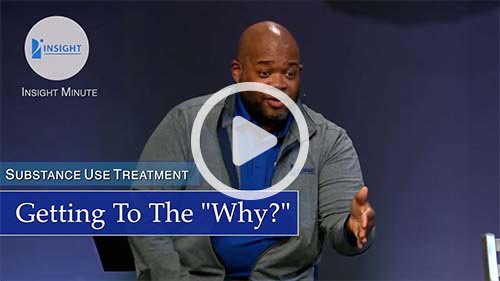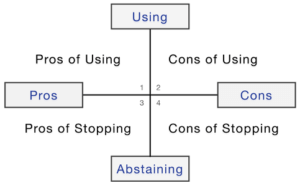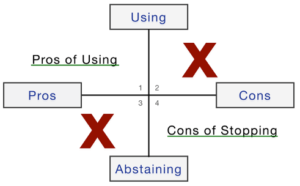When working with clients on their substance use, there’s one tool I always use. Though it seems simple, it can be powerful and lead to insights. It’s a Cost/Benefit Analysis.
Cost/Benefit Analysis:
Clients are surprised when I tell them to put a big “X” in quadrants 2 and 3. I don’t care about these areas. People typically know the consequences if they use. It’s logical. Quadrants 1 and 4 is where the therapy happens. Working with these quadrants gets to their “why?”.For us it’s always the “why?” We must get clear on why they began using in the first place and what they get from their continued use.
Particularly quadrant 4: What are the downsides of stopping your use? What would your life be like without the substances? What would you have to deal with? This gets to the “why?”. Only focusing on behavior without addressing the “why?”, often lacks the power to lead to lasting change.
While the substance use is having a negative impact overall, taking the substances away is a real loss. Strategies to help replace the benefits of using and working with underlying issues is what’s needed. By taking clients through this activity, I’m trying to push beyond their behavior – I’m trying to get to their “why?”










